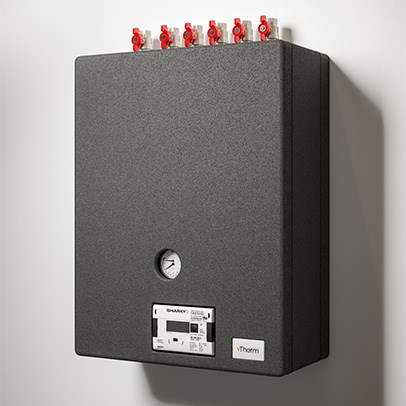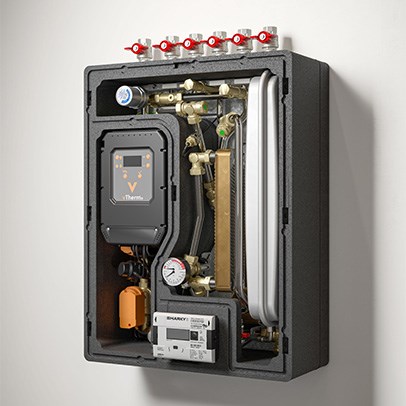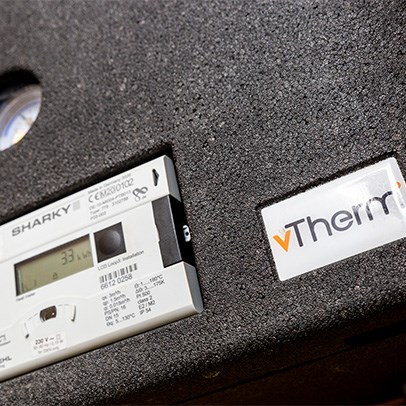It is easy to delve into the innovation behind heat interface units, but what are they and how do they work?

A heat interface unit looks like a traditional combi boiler and enables heat from a heat network, district heating scheme or communal energy scheme to be distributed throughout the home. They are typically wall-mounted and are also called a HIU, Heat Stations or Hydraulic Board.

Heat interface units, like Vital Energi’s vTherm˚ range of HIU’s can supply domestic hot water (DHW) and heat for radiators within the home or underfloor heating. Typically, there are two categories of heat interface unit; those that only supply and control heating and units that supply and control both heating and domestic hot water (DHW).

A heat interface unit (HIU) in a home acts as a pressure break between an energy centre distribution network and the end user. Heat enters the home through insulated pipes that run from the central energy source (energy centre or boiler plant) into the heat interface unit. Inside the HIU heat plate exchangers transfer the heat from the central system into instanteous heating and hot water.

Yes, drainage is only required for the heating safety relief valve situated at the bottom of the unit. Usually a Tundish drain is used to dissipate the heating safety valve from a over-pressurised state.

This depends on the temperature of the primary system e.g. energy centre or boiler plant. For an example a temperature of 60-95˚C from the primary system may result in a secondary output temperature of approximately 45-80˚C.

Generally, you don’t. The pressure is controlled by pressure regulating valves. However a trained Heat Interface Unit Engineer can pressurise the secondary system if needed. Please refer to the appropriate data sheet for information on primary and secondary system pressures.

No, not directly. A heat interface unit uses energy from a heat network, district heating or communal energy system therefore doesn’t directly use gas unlike a traditional combi boiler and can benefit from a range of renewable energy solutions.

Yes, a heat interface unit (HIU) requires a direct electrical supply.

A HIU should be serviced every 2 years by a qualified HIU Service Engineer who has completed the appropriate vTherm training at the Vital Energi Training Academy.

As energy on a heating system generated by a heat network, district heating scheme or communal energy scheme is generated from one source (e.g. an energy centre or boiler plant) this provides a more secure and reliable supply of heating and hot water compared to traditional domestic heating systems.

No estimated bills due to remote meter readings, resulting in accurate metering, billing and revenue collection.

Reduced labour and maintenance costs due to there being no direct gas supply, meaning there is no requirement for gas safe registered engineers or annual gas safety checks.

The system is flexible and can be connected to an renewable energy source resulting in a healthier, low carbon heating solution compared to traditional alternatives.

Heat interface units are innately safer than traditional boilers as the generation of gas and hot water is outside of the home.

The vTherm˚e is compatible with smart technology such as Vital Energi's Glass App & Portal, as well as third party systems such as Guru meters and vPro in-home displays. This results in greater visibility and control for operators and end users. See our Glass App & Portal for details.
